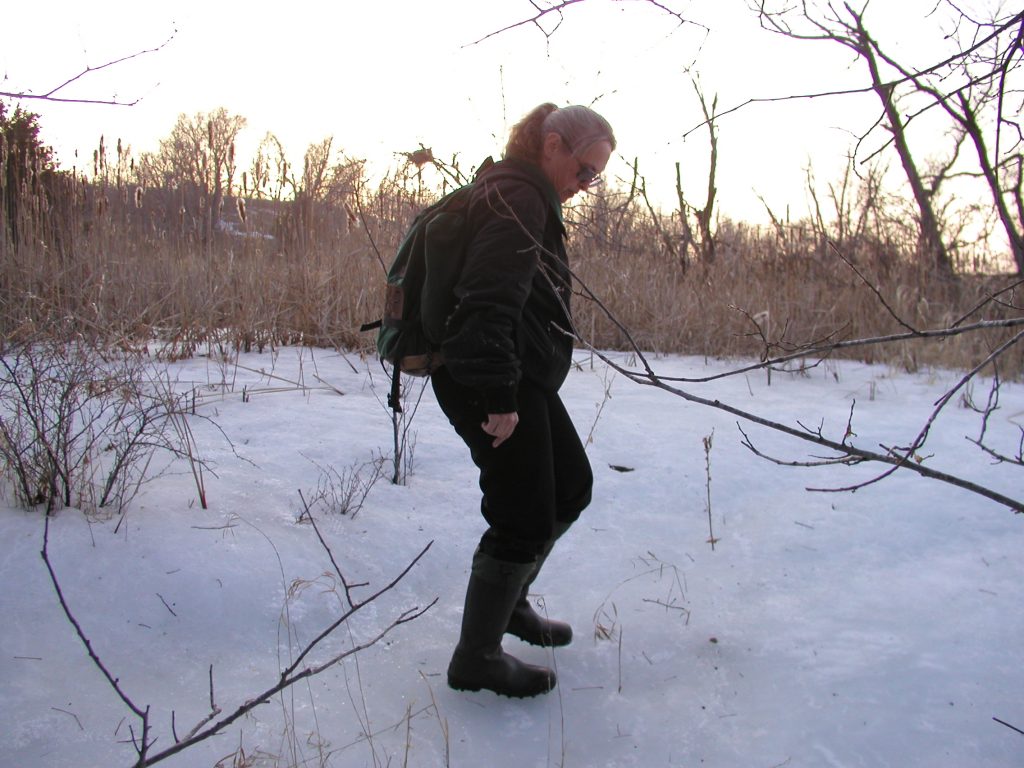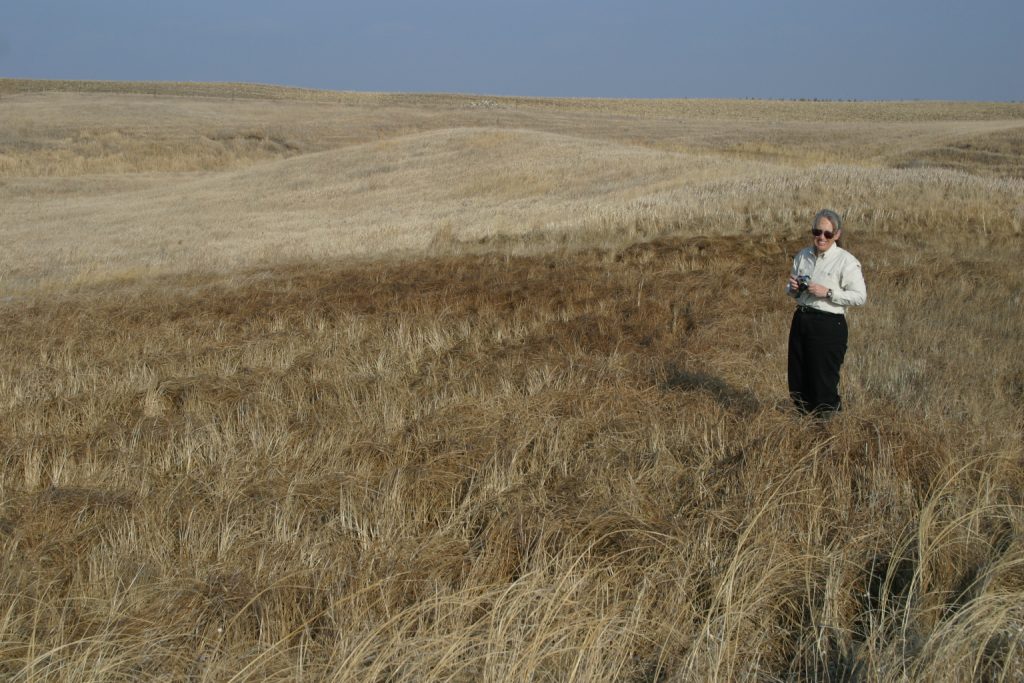
Jeanette (Jennie) Leete retired from her full-time position at the Minnesota Department of Natural Resources on February 13, 2024. She had been at DNR for more than 42 years and was a charter member of MGWA. By the time of her retirement, she had become a Section Manager for the Division of Ecological and Water Resources. In this job she was responsible for the team that manages financial risks and that supports the work of the Division through financial management, computing, communications, and planning services.
Throughout her career she’s had some wonderful and caring mentors, whose names will be dropped liberally in this recitation.
As a Coast Guard brat, she was moved around a lot – New London CT, Sandy Hook NJ, and the Straits of Mackinac. She was taught to read charts and navigate the Straits, handle lines, dive to clear props, to serve as dive tender and to squeeze into the engine room to make small repairs. Her dad left the Coast Guard to open a dive shop, work with the Indiana State Police Dive Team, and be an insurance agent in Indianapolis, IN. But he missed the military life, and so he moved the family to Germany for a job that brought him back in touch with the service life.
In Germany Jennie stayed close to the water by choosing rowing as her sport. She completed a baccalaureate in natural science and math at Wildermuth Gymnasium Tuebingen, took accounting coursework, and then had several jobs – in the paint shop of a toy train factory, as an architectural intern and then forestry intern and as a youth camp kitchen aide at a ski resort in Switzerland.
She returned to the US for college at Macalester where she majored in Geology. For graduate school she went to the University of Minnesota to study Forest Hydrology with Ken Brooks. Her Master of Forestry research project was a remote sensing study of the trophic status of Minnesota lakes with Tom Lillesand. This project piloted future work that would be done at MPCA. Her Master of Science research project was a study of forest harvesting impacts on bogs and fens (organic soils) through microbially mediated release of phosphorus to runoff with Sandy Verry and M. Dean Knighton. Her PhD research was a paired watershed study of sediment yield and nutrient release to streamflow, also with Sandy Verry. She received the first doctorate awarded to a woman from the University of Minnesota’s College of Forestry.
Full-time employment was elusive: she worked as a wetlands/peatlands consultant for the US Forest Service, as an independent software developer and as a limnologist for a water quality consulting firm. She also indulged herself with postgraduate training in hydrogeology at the International Ground Water Modeling Center when it was located at Butler University in Indianapolis – walking distance from her grandparents’ house.
Her employment at DNR began with the former Division of Waters. She started in a part-time position to monitor groundwater quality above the Mount Simon aquifer where natural gas is stored. Her supervisors Pat Bloomgren and Brian Rongitsch did not (at least not loud enough to stop her) protest her bringing groundwater modeling to the Division by bringing her own computer (an original IBM-PC – in 1982) and her own software (HydroPal) to work. She had developed one of the first commercially available PC-based software packages working with Bill Walton (USGS/U of MN/Illinois State Water Survey). It didn’t make sense to run remote batches on the Cray or Cyber overnight (and have someone drive over to the “U” to pick up the output) when the calculations we needed could just be done at one’s desk.
To keep busy she taught – also part-time – at Macalester College. Her courses were Environmental Geology, Geomorphology and Hydrology. Earl Spangenberg (UW Stevens Point) invited her to apply for a National Science Foundation Faculty Enhancement Workshop: New Techniques in Water Resources. She attended for three summers. These workshops were held in Lakewood Colorado at the USGS National Training Center and included working with hydrologists, geomorphologists and groundwater experts such as Tom Winter and the developers of the early numerical models (Trescott, Larson, Harbaugh) in the field and in computer lab settings.

The Division of Waters loaned Jennie out to the Division of Forestry to carry out studies on the impacts of harvesting on stream water quality and on impacts of the use of hexazinone with Mike Phillips, to the Division of Minerals to study and model a flow-through treatment bed for removal of copper from stockpile runoff with Paul Eger, and to the Ecological Services branch of the Division of Fish and Wildlife to work on calcareous fens with Welby Smith.
Jennie became a supervisor in 1986 and worked to hire the first groundwater staff who were located in greater Minnesota. Impacts of groundwater withdrawals on surface waters – lakes, wetlands, springs and fens were to become the greater part of her individual work. She wrote a white paper for leadership that provided background for legislation protecting the Mount Simon-Hinckley aquifer from unlimited development and another white paper providing background for legislation protecting calcareous fens. She assisted Jim Almendinger, then with the U.S. Geological Survey, in a study of Minnesota calcareous fens, which led to two publications that helped document and understand the workings of these groundwater-dependent wetlands.
She decided to capitalize on her training and experience in financial accounting and move into administration as a Fiscal Unit Manager working for Steve Hirsch, the first Director of the new EWR – a new Division created from old Waters and old Ecological Services.
Extracurricular activities included keeping several professional groups alive during critical periods of their existence:
- American Institute of Hydrology, General Secretary 1994-2000. Editor of Hydrologic Science and Technology 1995-2000. Editor of AIH Bulletin 1995-2000. Upon election to national office in 1994 she discovered that the organization had not turned in any federal nor state non-profit filings. She survived fixing that problem and the resultant IRS audit.
- Association for Women Geoscientists, founding member of the Minnesota Chapter in 1987, National Business Manager 1991 – 1993, National Executive Director 1993 to 1999. Revised the Chapter Operations Manual and wrote the Office Administration Manual. Computerized the organization’s books with non-profit filings in mind.
- Minnesota Ground Water Association and Foundation, charter member, Business Manager 1985-2024. Executive Director of MGWAF from creation of the Foundation in 2000 through 2024.
And a couple of long-term public service endeavors:
- 15 years of volunteering with TaxAide as Tax Law Instructor and Site Coordinator at St. Paul free tax preparation sites and
- 20 years of active volunteering with Habitat for Humanity, as a Habitat 500 bike ride committee member and participant and as an active volunteer on at least one build/year.
Jennie raised two sons, Christian and Logan. She delights in the fact that they are self-supporting, as a mechanical engineer and chemical engineer, respectively, found intelligent and caring partners, and are raising wonderful kids of their own. She and her partner of 34 years, Sean Hunt, look forward to spending more time at the cabin the family built on Horseshoe Lake near Nisswa, while Jennie makes quilts and Sean curates a scotch whisky collection.
MGWA is committed to developing a just, equitable, and inclusive groundwater community. Click on the button below to read MGWA’s full diversity statement.